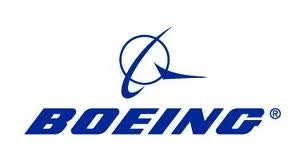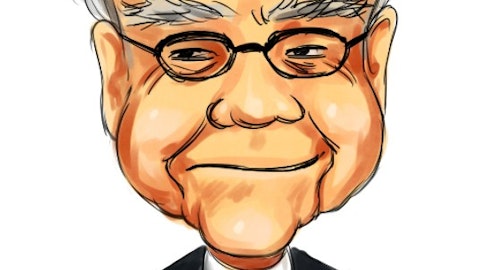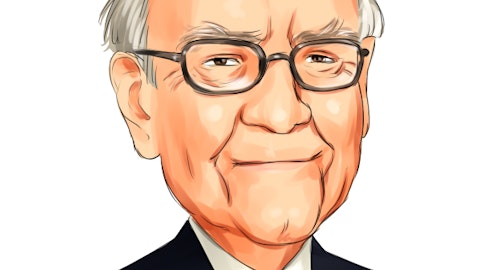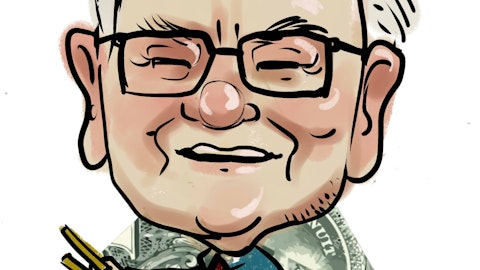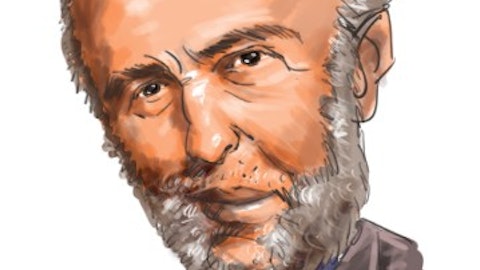Rumors abound that one of Asia’s biggest low cost carriers, the Indonesia based privately held PT Lion Mentari Airlines (Lion Air), a traditional The Boeing Company (NYSE:BA) customer, is planning to place another massive order of more than 200 jets, this time however, with Airbus. In late November, Lion Air’s Commercial Director Edward Sirait said, “We are studying every possibility to fulfill our target for the planes from every manufacturer, including with Airbus.” The order, according to the French newspaper Dépêche du Midi, is now expected to be for 220 Airbus A320 Neos and will be officially announced on Jan. 17 when Airbus releases its annual sales figure.
About a year ago, Lion Air placed the biggest order in Boeing’s history for 201 737 Maxs and 29 737-900 ERs for $21.7 billion. This could be a huge blow for Boeing but an extraordinary achievement for EADS NV (EPA:EAD)’s Airbus, which is looking to bag Boeing’s biggest customer. The current problems with the 787 Dreamliner are not helping anyone in Boeing’s corner right now. Airbus is already a primary supplier of aircrafts to Lion Air’s rival Air Asia. With the new order, the company will significantly enhance its foothold in Asia Pacific. Boeing recorded a total of 1,200 orders in 2012 while Airbus is expected to touch 900 orders in the same period. You can expect a number of those orders to get canceled in the coming months. This misstep by Boeing will be Airbus’s gain.
The Kuala Lumpur-based AirAsia Bhd is the largest low cost airliner of Asia operating in the booming budget carrier industry of the continent. Like Lion Air, AirAsia had also placed a massive order for 200 Airbus A320 Neos last year for $18 billion, which was the biggest commercial order ever received by Airbus. More recently, in December, AirAsia placed another order for 100 single-aisle Airbus A320 jets at undisclosed terms, but industry experts have given an estimate order size of around $9.37 billion. As has always been the tradition, large aircraft orders almost always involve leading political figures from the U.S. (for Boeing) or from Europe (for Airbus). When Tony Fernandes , AirAsia’s boss, was signing the new order at Airbus’s facility in the UK, he was flanked by none other than the British Prime Minister himself, Mr. David Cameron. AirAsia has become Airbus’s biggest customer and has so far ordered 475 aircrafts.
Airbus and Boeing have a long history of rivalry, but a new battle for the Asia Pacific market is now brewing up between AirAsia and Lion Air. Indonesia’s Lion Air has already taken the battle to AirAsia by establishing ‘Malindo Airways’ for Malaysia, to compete directly in AirAsia’s backyard. Of course, AirAsia already operates through its associate company ‘Indonesia AirAsia’ in Lion Air’s territory.
Indonesia AirAsia is 49% owned by AirAsia Bhd. The unit reported spectacular performance in the previous quarter with its revenues increasing by 12% as the company swung from a loss of $2.66 million (IDR 25.7 billion) in Q3-2011 to a profit of $7.71 million (IDR 74.5 billion). Overall, AirAsia’s revenues in the first nine months of 2012 went up by 11.53% from last year to $1.18 billion. This translated into a 7.1% increase in net operating income from $155.27 million in the first nine months of 2011 to $166.30 million in 2012. For the third quarter, the company reported a 9% increase in the number of passengers carried and a 10% increase in capacity from the same quarter last year.
AirAsia has significant representation in iShares MSCI Malaysia Index Fund (NYSEMKT: EWM) while the aircraft industry of the developed world, from U.S and Europe to Singapore and South Korea, is represented in the Claymore/NYSE Arca Airline (NYSEARCA:FAA). In the last six months, FAA has been up by 20% whereas EWM is up by 8.4%. FAA is primarily concerned with the U.S and European airline industry, which is already struggling, therefore investors are advised to avoid this ETF. The issues Boeing will have over the 787 will put a big drag on FAA. Malaysia’s economy is tied closely to both China and Singapore. Both countries look to have turned the corner on GDP growth in the medium term. Political uncertainty in Malaysia is a risk for the first time in 60 years, however.
| FAA | EWM | |
| 6 Months | 20.37% | 8.42% |
| Expense Ratio | 0.65% | 0.52% |
| Beta | 1.21 | 0.8 |
| P/E | 8 | 15 |
| EPS | N/A | 0.95 |
| Yield | 0 | 1.58% |
| Top Holding | Delta Air Lines | Malayan Banking Bhd |
| Focus | US Airline Stocks (71.1%) | Malaysian Equities(98.9%) |
The rivalry between AirAsia and Lion Air will continue to capture headlines from the Asian airline industry. The competition will be on price, which is good news for the customers but terrible for investors. This is evident in AirAsia’s stock on the Kuala Lumpur exchange – AIRASIA BHD (PINK:AIABF) – which is down by 23.5% in the past six months. Both firms will be willing to compromise on profits for greater market share now. Currently, AirAsia is growing at a pace of 25 new aircraft per year. With the new order of 100 jets, it will have a total of 350 new A320/320Neos delivered in the next fourteen years. The market of Asia Pacific is rapidly growing, and these two companies will continue to fight for it. It is the only regional market where air travel is projected to grow significantly in the next seven years.
However, there are some positives for AirAsia’s investors. The company is looking to fix an annual dividend that will be paid regularly. Following the listing of its Thai business unit at the domestic stock exchange, Thai AirAsia has become self-sufficient and no longer requires the support of its parent. The management is making similar plans for the Indonesian unit as well. Although investors are worried about the increasing competition, in the long term larger market share is going to pay off and a more diversified structure should pay off in the long run.
The article Asian Budget Carrier Wars Intensify originally appeared on Fool.com.
Copyright © 1995 – 2013 The Motley Fool, LLC. All rights reserved. The Motley Fool has a disclosure policy.
